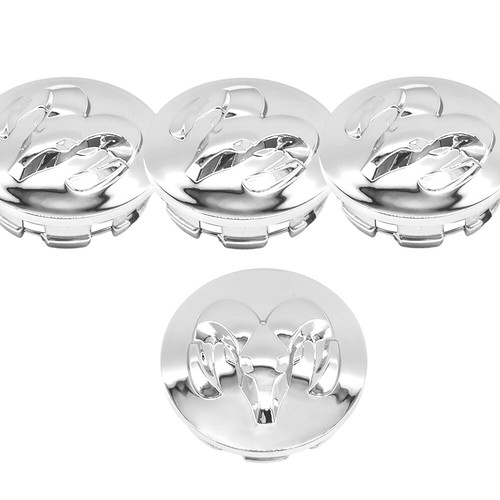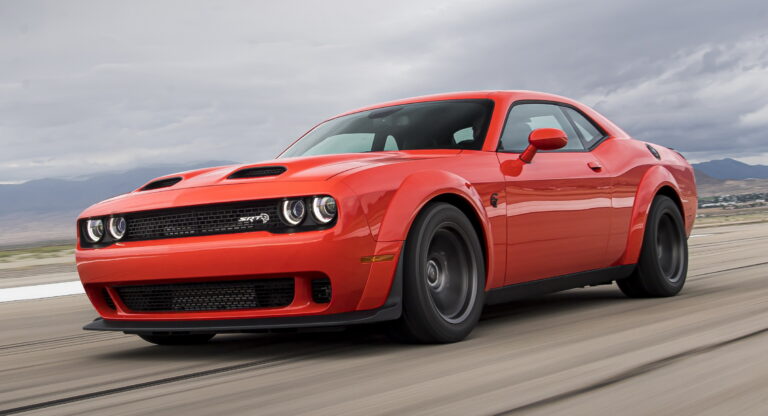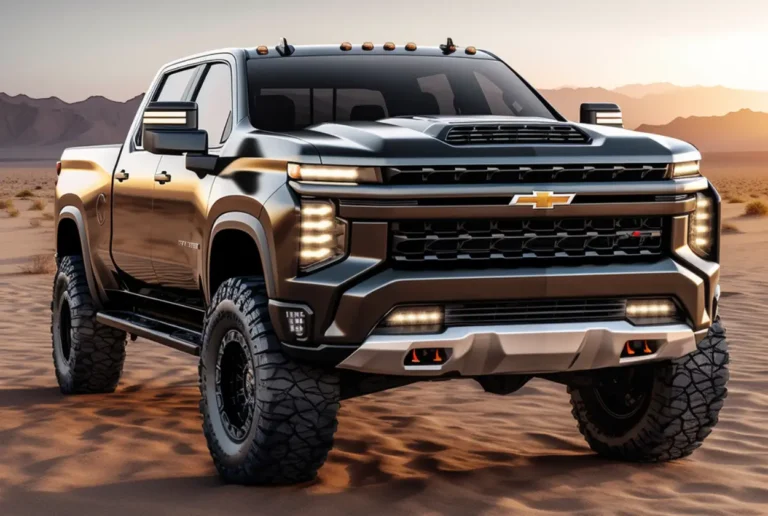Does F150 Cap Fit Ram 1500?
Does F150 Cap Fit Ram 1500? cars.truckstrend.com
In the world of pickup trucks, versatility is king. Truck owners frequently look for ways to enhance their vehicle’s utility, and a bed cap (also known as a truck topper or camper shell) is a popular accessory for protecting cargo from the elements and theft, while also improving aerodynamics. Given the sheer number of Ford F-150s and Ram 1500s on the road, it’s natural for owners to wonder if a cap designed for one might fit the other, perhaps to save money by purchasing a used unit or inheriting one.
The simple, often disappointing, answer is: No, an F-150 cap will generally not fit a Ram 1500 perfectly, and often not at all, without significant modifications. While both are full-size pickup trucks, their bed dimensions, rail designs, and cab contours are proprietary and distinct. This article will delve into the reasons behind this incompatibility, explore the challenges of attempting such a fit, and guide you toward making the best decision for your truck.
Does F150 Cap Fit Ram 1500?
Understanding Truck Bed Dimensions: Why Compatibility Matters
At first glance, many truck beds appear similar. They’re rectangular, have a tailgate, and are designed to haul cargo. However, beneath this superficial resemblance lies a complex array of precise measurements that dictate cap compatibility. Truck cap manufacturers invest heavily in tooling and design to create caps that precisely match the contours and dimensions of specific truck models and model years.
Key dimensions that impact cap fit include:
- Bed Length: While common lengths like 5.5 ft, 6.5 ft, and 8 ft exist across manufacturers, the exact measurement from bulkhead to tailgate can vary by an inch or two. This seemingly small difference can result in a cap that’s too short (leaving a gap at the tailgate) or too long (overhanging the tailgate or preventing it from closing).
- Bed Width: This is critical at several points: the width across the top of the bed rails, the width at the bulkhead (front of the bed), and the width at the tailgate. Differences here will lead to gaps, an inability to properly clamp the cap, or the cap simply not sitting flush.
- Bed Rail Height and Design: Truck bed rails are not flat and uniform. Their height, curvature, and the presence of accessories like tie-down points or utility tracks (e.g., RamBox cargo management system on some Ram models) directly affect how a cap sits and seals. The cap’s internal frame needs to clear these features.
- Cab Contour: The aesthetic and aerodynamic fit of a cap depends heavily on how its front edge matches the curvature of the truck’s cab. Ford F-150s and Ram 1500s have distinctly different cab profiles. An F-150 cap on a Ram 1500 might leave a large unsightly gap, rub against the cab, or create aerodynamic drag.
- Tailgate Opening: The rear opening of the cap must align perfectly with the truck’s tailgate for proper sealing and ease of access. Misalignment can prevent the tailgate from opening/closing or compromise weather protection.

Common Discrepancies Between F-150 and Ram 1500 Beds

Despite both being leading full-size trucks, Ford and Ram beds have significant design differences that preclude direct cap interchangeability:
- Overall Width: Ram 1500 beds are typically a few inches wider than comparable F-150 beds, particularly over the bed rails. This means an F-150 cap would likely be too narrow for a Ram, leaving significant gaps on the sides and an inability to seal properly. Conversely, a Ram cap would be too wide for an F-150.
- Bed Rail Shape and Thickness: The profile of the bed rails themselves differs. Ram trucks often have thicker, more rounded bed rails compared to F-150s. This affects how the cap’s clamping system engages and how flush the cap sits. RamBox models introduce an even more complex rail design.
- Cab-to-Bed Transition: The way the cab meets the bed, including the height difference and the curvature of the cab’s rear window, is unique to each manufacturer. Caps are molded to complement these specific contours, ensuring a seamless look and proper seal against the elements.
- Tailgate Design: While seemingly minor, the exact dimensions and latching mechanisms of the tailgate can vary, impacting the fit and seal of the cap’s rear door.

These discrepancies mean that even if you could physically place an F-150 cap on a Ram 1500, it would likely result in an ill-fitting, leaky, and aesthetically displeasing setup.
The Reality of "Fitting": What Does It Truly Mean?
When we ask "Does it fit?", we’re not just asking if it can be placed on top. A proper fit encompasses several crucial aspects:
- Aesthetic Fit: Does it look like it belongs? This includes the cap’s lines flowing with the truck’s body, no awkward overhangs or large gaps, and the front contour matching the cab.
- Functional Fit: Does it do its job? This means it seals out water, dust, and debris effectively. It should also allow the tailgate to open and close freely, and its internal lights and third brake light (if equipped) should function.
- Security Fit: Is it secure against theft and high winds? A properly clamped cap will not shift at highway speeds or be easily pried open. An ill-fitting cap might only have a few points of contact, making it vulnerable.
- Safety Fit: Does it obscure visibility or pose a hazard? An improperly seated cap could shift during driving, or its rear window might not align with the truck’s rear view.
Forcing an F-150 cap onto a Ram 1500 will almost certainly compromise all of these aspects.
Potential Challenges and Necessary Modifications (If You Insist)
Despite the strong recommendation against it, some individuals may still attempt to modify an F-150 cap to fit a Ram 1500, often driven by the availability of a very cheap or free cap. Here are the challenges and potential "modifications" you’d face:
- Gaps and Leaks: The primary issue will be sealing the gaps around the bed rails. This would involve extensive use of weatherstripping, silicone sealant, and potentially custom-cut foam or rubber shims. Expect ongoing battles with water and dust intrusion.
- Clamping Issues: Standard cap clamps may not properly engage with the different bed rail profiles. You might need custom-fabricated brackets or shims to secure the cap, which could damage the truck’s bed rails or the cap itself.
- Length Discrepancy: If the cap is too short, you’ll have a gap at the tailgate. If it’s too long, it will hang over. Neither is easily fixable without major, structural cap modification (cutting and re-fiberglassing), which is costly and complex.
- Cab Clearance: The front of the cap might rub against the truck’s cab during flexing, or there could be a large, unsightly gap. There’s no easy fix for this.
- Wiring Compatibility: The wiring for the third brake light and interior lights will likely need to be rewired or adapted, as connectors and voltage requirements can differ.
- Aesthetics: Even with extensive modifications, the cap will likely never look "right." It will appear mismatched, bulky, or awkward.
- Resale Value: An F-150 cap modified for a Ram 1500 will have virtually no resale value and might even deter future buyers of your Ram if the modifications cause damage.
- Professional Help: Attempting these modifications yourself requires significant DIY skill and tools. Hiring a professional fabrication shop for such a job would likely cost more than a purpose-built used Ram cap.
Benefits of a Purpose-Built Ram 1500 Cap
Given the challenges, the most practical and satisfactory solution is almost always to purchase a cap specifically designed for your Ram 1500 (and its specific model year and bed length). The benefits far outweigh the perceived savings of a mismatched cap:
- Perfect Fit and Seal: Designed to match your truck’s exact dimensions, ensuring optimal weather protection and security.
- Matching Aesthetics: The cap’s lines, cab contour, and available paint options will seamlessly integrate with your Ram, enhancing its overall appearance.
- Optimized Features: Built-in compatibility with Ram-specific features like the RamBox storage system (if applicable).
- Warranty and Support: New caps come with manufacturer warranties and customer support.
- Peace of Mind: No worries about leaks, shifting, or security compromises.
- Higher Resale Value: A properly fitted cap adds value to your truck.
Tips for Buying a Truck Cap
If you’re in the market for a truck cap for your Ram 1500, here’s practical advice:
- Measure Meticulously: Even if buying new, measure your truck bed’s interior length, width (at bulkhead and tailgate), and the height of the bed rails. Double-check your truck’s exact model year, trim, and bed length (e.g., Crew Cab with 5’7" bed, Quad Cab with 6’4" bed).
- Know Your Model Year: Truck bed designs can change even within the same generation, so the exact model year is crucial. A cap for a 2018 Ram 1500 (DS generation) might not fit a 2019 Ram 1500 (DT generation), even though both are "Ram 1500s."
- Check Manufacturer Compatibility Charts: Leading cap manufacturers like Leer, ARE, and Snugtop provide detailed compatibility charts on their websites. Use these to find the correct cap model for your specific Ram.
- Consider New vs. Used: New caps offer customization and warranty. Used caps can save money, but ensure they are for your exact truck model and in good condition. Inspect for cracks, damage, and working components.
- Factor in Installation: Professional installation ensures a proper fit, seal, and wiring. Many dealerships or cap retailers offer this service.
Cost & Value Considerations: F-150 Cap vs. Ram 1500 Cap
The decision to acquire a truck cap involves more than just the initial purchase price. The "cost" can also include time, effort, potential damage, and long-term satisfaction. Here’s a comparative look at the options:
| Option / Scenario | Description | Pros | Cons | Estimated Cost Implications (USD) |
|---|---|---|---|---|
| Attempting to fit F-150 Cap on Ram 1500 (DIY) | Buying a used F-150 cap (often cheap/free) and trying to install it yourself with basic modifications (weatherstripping, shims, re-wiring). | Potentially lowest initial monetary outlay for the cap. | Poor aesthetic fit, high risk of leaks/dust, compromised security, potential for damage to cap or truck, significant time investment, ongoing frustration, no warranty. | Cap: $0-$1000. Modifications: $50-$200 (materials). Total: $50-$1200+ |
| Attempting to fit F-150 Cap on Ram 1500 (Professional) | Hiring a fabrication shop to modify an F-150 cap to fit a Ram 1500, including custom sealing and clamping. | Potentially better aesthetic and functional fit than DIY; professional finish. | High labor costs, still might not be perfect, limited shops offering this specialty, no guarantee of perfect seal or appearance. Likely to exceed the cost of a new Ram-specific cap. | Cap: $0-$1000. Fabrication: $500-$2000+. Total: $500-$3000+ |
| Purchasing a Used Ram 1500 Specific Cap | Finding a used cap specifically designed for your Ram 1500 model year and bed length through classifieds or specialty shops. | Cost-effective compared to new, likely a good fit. | Finding the exact match can be difficult, may have wear/damage, no warranty, limited color options (may require repainting). | Cap: $800-$2500. Repaint (optional): $300-$800. Total: $800-$3300+ |
| Purchasing a New Ram 1500 Specific Cap | Buying a brand new cap from a reputable manufacturer (Leer, ARE, Snugtop) for your exact Ram 1500 model and bed length. | Perfect fit, full warranty, custom features, choice of color/options, optimal weather protection and security, peace of mind. | Highest upfront cost. | Cap: $2000-$4000+. Installation: $150-$300. Total: $2150-$4300+ |
| No Cap / Open Bed | Not installing any cap on the truck. | No cost for cap, unrestricted cargo height, easy loading/unloading of oversized items. | Cargo exposed to elements, theft, and road debris; less organized; potentially lower fuel efficiency due to aerodynamic drag. | Total: $0 |
Frequently Asked Questions (FAQ)
Q: Can I use an F-150 cap on any Ram 1500?
A: No, generally not. Truck bed dimensions, including length, width, rail height, and cab contour, are unique to each manufacturer and often vary by model year and trim.
Q: What are the main differences in truck beds that prevent interchangeability?
A: Key differences include bed width, the specific shape and height of the bed rails, the exact length of the bed, and the curvature of the cab where the cap meets it. Ram 1500 beds are often wider than F-150 beds.
Q: Is it safe to use an ill-fitting cap?
A: It is not recommended. An ill-fitting cap may not be securely clamped, posing a safety risk if it shifts or detaches at highway speeds. It also won’t provide adequate weather protection or security for your cargo.
Q: How much does it cost to modify a cap to fit a different truck?
A: Modification costs can vary widely. DIY attempts might only involve buying weatherstripping and shims ($50-$200). Hiring a professional for significant fabrication could easily cost $500-$2000 or more, often exceeding the cost of buying a used cap designed for your truck.
Q: Where can I find a used cap specifically for my Ram 1500?
A: Check online marketplaces (Facebook Marketplace, Craigslist), local classifieds, truck accessory shops that sell used caps, or specialty forums for Ram owners. Be sure to verify the cap’s model year and bed length compatibility with your truck.
Q: What should I measure before buying a cap, even a new one?
A: Always measure the inside length of your truck bed (from bulkhead to tailgate), the width across the top of your bed rails, and your truck’s exact model year, cab configuration (e.g., Crew Cab, Quad Cab), and bed length (e.g., 5’7", 6’4").
Q: Are there universal truck caps?
A: While some very basic, frameless, or soft truck bed covers might offer a "universal" fit, there are generally no hard, rigid truck caps that truly fit universally across different truck makes and models while providing proper sealing and security.
Conclusion
The allure of fitting an F-150 cap onto a Ram 1500, perhaps to save money, is understandable. However, the reality is that the precise engineering and unique dimensions of each truck model make direct interchangeability highly impractical. Attempting to force a fit will almost certainly lead to compromises in aesthetics, functionality, security, and long-term satisfaction.
While modifications are theoretically possible, the effort, cost, and inevitable shortcomings often outweigh the benefits. For a truly functional, secure, and aesthetically pleasing solution, investing in a truck cap specifically designed for your Ram 1500 model year and bed length is the unequivocally superior choice. It ensures a perfect fit, reliable weather protection, enhanced security, and ultimately, peace of mind for years to come.





